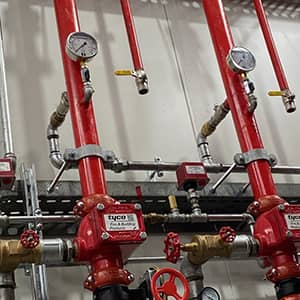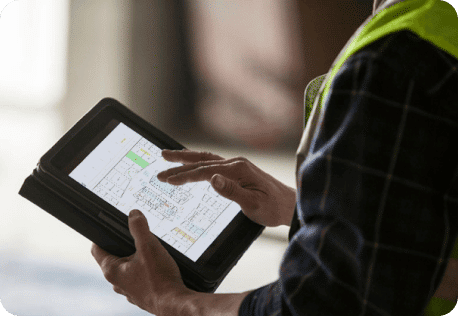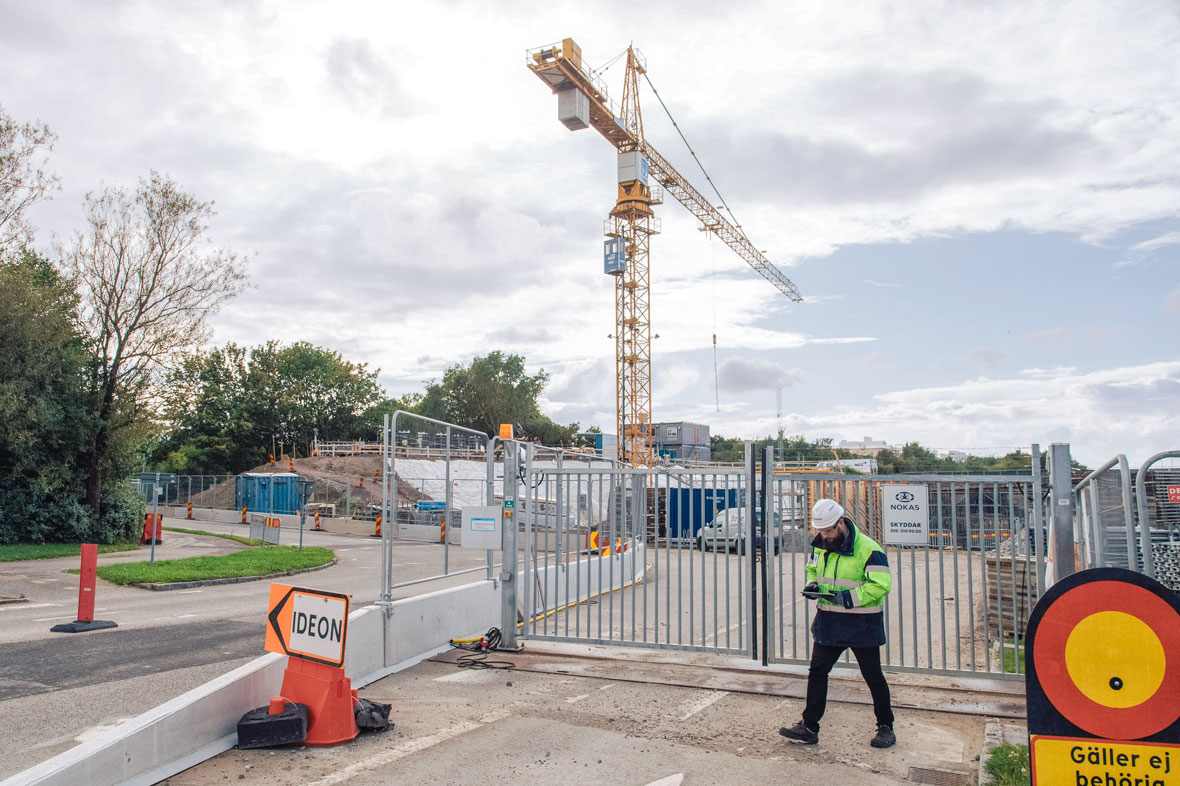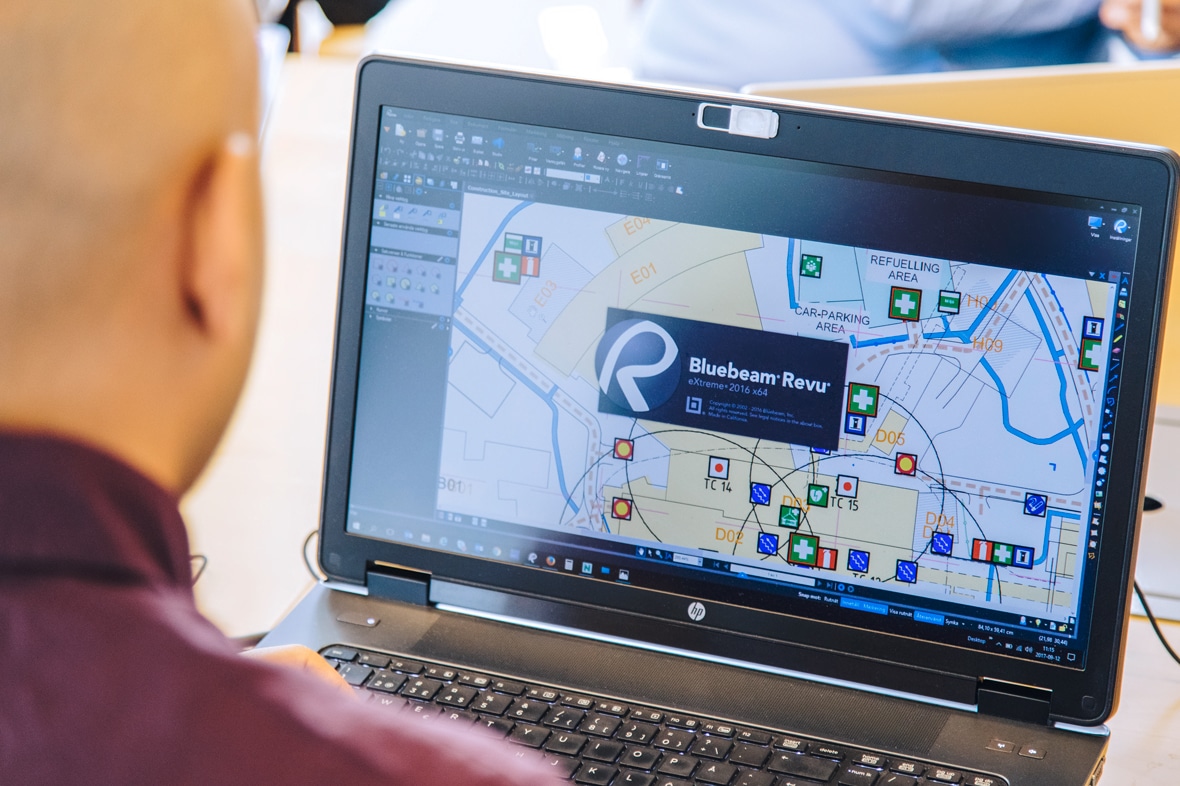Skanska Embraces Digital Tools for the World’s Most Powerful Neutron Source
At the site of the European Spallation Source in Sweden, a particle accelerator is slated to become the world’s most powerful neutron source. Construction partner Skanska is able to increase efficiency and save time on this project with the help of Bluebeam Revu. Over the past six years, Skanska has invested in maximising productivity and closing the skills gap by partnering with Bluebeam to digitise workflows on large, complex projects.
Skanska by the Numbers
- 41,000 employees worldwide
- 5th largest construction company in the world
- 800 people working on ESS simultaneously
- US$90 million (AU$126 million) – cost of the Lund railway extension
- US$589 million (AU$825 million) – cost of constructing ESS
Skanska, one of the world’s top construction firms, knows that to remain successful and grow in size and profitability, they need to take care of their own. That means providing the latest and greatest digital tools so their engineers, architects and builders can work faster, safer and smarter. These tools also help enable them to focus on what they’re best at: finding innovative solutions and constructing world-class facilities, like the European Spallation Source (ESS) Research Facility in Lund, Sweden.
At ESS, scheduled to open in 2024, Skanska is constructing the campus that will house the world’s most powerful linear proton accelerator. The half-billion-US-dollar research facility will attract some 3,000 researchers a year and will include a helium-cooled tungsten target wheel, a suite of laboratories and a data centre. Skanska is also building a 6-km light rail extension to connect Lund’s central railway station to ESS. On a project of such scale and complexity, the company is relying heavily on Bluebeam® Revu® and Bluebeam Studio™ for everything from design reviews to on-site changes.
Skanska considers their close partnership with Bluebeam crucial to their success, as a new century brings its own set of challenges. ‘We need to change as time goes on, and we need companies that support our business doing that as well’, says Emil Hagman, Digital Coach for Health, Safety and Sustainability at Skanska Sweden. ‘Bluebeam is extremely good at that.’ Hagman considers the Skanska-Bluebeam partnership a model for how collaborative relationships should work. The relationship supports several key tenets of good building and good business: connecting workers so that communication is seamless and easy; customising tools so workflows can be both standardised and tailored to an individual’s needs; and retaining and recruiting top talent.
Bringing People Together Across Space and Time
It’s nearly 650 kilometres from Skanska’s headquarters in Stockholm to the site of ESS in Lund – one of the company’s most ambitious projects to date. While some engineers work in the capital city and other regional offices around Sweden, others are stationed at the Lund office, shuttling back and forth from their desks to the worksite. And on a project of this scale, it’s not just a few, but several dozen Skanska employees who are devoting their time to designing, building and overseeing construction of the campus, along with their other project, the Lund light rail extension. Given Skanska’s size and the scale of the work, it is vital that all the parties can communicate in real time so that plans are reviewed in a timely fashion and changes can be implemented to avoid scheduling delays or – worse yet – costly mistakes in the actual built environment.
Feroz Razwan, Construction Engineer and BIM leader, sees the benefits of digital drawings every day. Formerly, a drawing would be physically marked up and then sent to another office, or several offices, for review. Now, communication has become instantaneous and streamlined with the ability to mark up documents on the jobsite using Revu’s mobile application and to send those drawings digitally to other parties. Plus, Skanska saves significantly on paper costs.
Digital drawings also allow users to see not only which changes have been implemented, but by whom. ‘If I print out a drawing and do some markups, I will not draw my signature, so no one will know who did this and why. But in Revu I can do some markups, everyone will see who did the markup, I can put some comments and maybe they are hidden in the beginning, but you can always get that information; that’s very important’, says Razwan. With the Markups List in Revu, there’s an increased level of accountability. Changes can be tracked and updated so issues don’t linger and it’s clear when an issue has been addressed. Additionally, a team can now appreciate the unique contribution each person makes to a project. Jimmy Forsberg, Skanska Sweden’s Program Owner for Bluebeam and Development Leader for GoMobile, stresses the importance of being able to access drawings on the go, whether that’s on site or during a busy day at the office. ‘We have a lot of coworkers that are out on site, and simple solutions and functionality like the Batch Link helps a lot because we can navigate the drawings a lot quicker, especially on our iPads.’
Staffan McLearnon, Production Manager, Skanska Sweden, regularly uses Revu on the go when designing traffic plans, such as for the rail extension in Lund. ‘We use Bluebeam to sketch and draw traffic management plans. We can go out on site and look at what we have just drawn and compare it to reality, and do fix-ups on the spot.’
Collaboration and communication extend past geographical distances as well. Lotta Wibeck, Programme, Business and Change Manager at Skanska Sweden, has noticed that when talking to her peers, they often cite software like Revu for allowing them to connect with coworkers who they might not have otherwise. ‘When we were asking people who they get the most help from, they said it was from the person sitting next to them. If the colleague next to you is young or old, it does not really matter; you help each other. In the construction industry you can’t really wait for the answer the next day, you are stuck with your issue right now and you need help immediately.’ When people understand the value of Revu, how it can help their work and their work-life balance, they are eager to master it. And a workplace where people communicate effectively and enthusiastically, and get to know their coworkers, is a workplace where efficiency and productivity can soar.
‘When people understand the value of Bluebeam, how it can help their work and their work-life balance, they are eager to master it.’
A Tailor-Made Solution
Skanska, a company of around 10,000 employees in Sweden, has approximately 5,000 users of Revu. That means employees in a multitude of roles and with varying levels of experience are using the software on a daily basis across offices worldwide. The ease of use, ability to standardise features company-wide and customise for individual users are what makes the software so valuable to so many people.
Forsberg, whose job at Skanska is to take ordinary workflows and improve them, is a strong believer in the power of Revu to improve lives. ‘It simplifies a lot of things that we do. You need something that is fairly simple and easy and innovative to use and where you also have the possibility to customise it to your needs.’ By using Revu, Skanska can create a set of tools available to every single user, ensuring that symbols and calculations are identical across all Skanska documents. This makes it easier for anyone in the organisation to come onto a project and immediately understand the plans; it also helps build institutional memory and learning, as data is more easily extracted and collated when it’s standardised. At the same time, each user, from structural engineer to project manager, can personalise their tool set, hiding buttons that aren’t useful and showing others that are.
‘It is all about the small stuff, the shortcuts, the small functionalities that we all use day to day. Those are the ones that save us so much time’, explains Forsberg. Easy customisation has also convinced new users to take that initial plunge and try Revu. Skanska Sweden takes a soft approach, with colleagues supporting each other as they explore the digital design world – versus pushing the software from the top down. Hagman explains that the tactic is ‘not to push people into things, but to let them pull themselves in. Sometimes when they start up Revu they see a lot of buttons, a lot of tools, and they might get a little scared. I show them: "This is the user interface, and you can change everything. If you do not want those tools there, remove them. You are going to be the one doing the work; you have to feel comfortable with the tool."’
Allowing Employees to Be Their Best Selves
In the end, it is the people in the project that make the difference, explains Wibeck. A lot goes into any construction project, and it’s no mean feat to build a complex, secure and massive campus like ESS, but Wibeck knows that the most important part of any organisation is the people who work there. ‘Without the people we are nothing, so take care of them and you get the gold.’
‘Without the people we are nothing, so take care of them and you get the gold.’
By now, it’s accepted wisdom that employee satisfaction is directly related to employee engagement, meaning employees who are content care more about their organisation, and by extension, the projects they’re working on. This increases productivity and thus, profit margins. One way Skanska Sweden keeps employees happy is by using Revu to remove many of the boring tasks that people rarely enjoy: tedious, repetitive calculations, organising materials and rework.
Engineers like Razwan understand this firsthand. ‘Bluebeam makes my day-to-day tasks more efficient so I can get more done in less time. And it’s not only me, it is all my colleagues, too.’ Hagman trains his coworkers on Revu and Studio as part of his job. He says there’s often a point during the training, a sort of ‘aha! moment’, when they realise, ‘"Hey, I don’t have to keep doing this boring thing I’ve been doing for two or three years now. It has just been removed from my workload."’ That, says Hagman, ‘is what Bluebeam has done for me and many others: remove boring work.’
It doesn’t just benefit the Skanska of today to embrace digital tools that make their lives easier. It also advances the Skanska of tomorrow. A new generation born in the digital age will not only accept but will expect that their employer embraces state-of-the-art tools that reduce tedium and give them access at any time to what they need in the office, on the jobsite, at home or anywhere. ‘We need to focus on our future employees as well’, says Hagman. ‘We need to keep up. People will demand much more in the future from the mobility and the digital workflows that they use. We cannot stop digitalising.’
Forsberg agrees wholeheartedly.
“’We talk a lot about the "Bluebeam feeling", and when we do our training we always have one, two, sometimes even five people who actually come up to us afterwards, when we are finished with the training, saying, "This functionality will really help me with this. I wish I had known about it earlier."’






